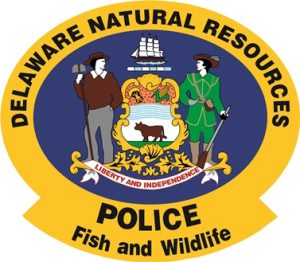DOVER – DNREC’s Division of Fish & Wildlife reminds hunters that a variety of game species are in season from now until February, and to be aware of other hunters who may be using diverse hunting methods while pursuing different game animals. Firearm small game hunters, squirrel hunters in particular, should know that they may find themselves sharing their hunting spots with camouflaged archery deer hunters in tree stands.
All hunters also are reminded of the requirement to wear no less than a total of 400 square inches of hunter orange on their heads, chests and backs during all firearms deer seasons, with the exception of those hunting migratory birds. Deer hunters concealed inside ground-level blinds also must place 400 square inches of hunter orange within 10 feet outside of the blind and at least 3 feet off the ground.
Ongoing or upcoming deer seasons:
• Archery/crossbow – thru Tuesday, Jan. 31, 2017 (No Sunday deer hunting allowed during archery and crossbow season except for designated Sundays during certain firearms seasons)
• Special antlerless – thru Saturday, Dec. 17
• Handgun – Saturday, Jan. 7-Saturday, Jan. 14, 2017 (No Sunday deer hunting allowed during handgun season)
• Shotgun – Saturday, Jan. 14-Saturday, Jan. 21, 2017, including Sunday, Jan. 15
• Muzzleloader – Monday, Jan. 23-Saturday, Jan. 28, 2017 (No Sunday deer hunting allowed during January muzzleloader season)
Ongoing or upcoming waterfowl/migratory game bird seasons include:
• Ducks – thru Saturday, Jan. 28, 2017
• Brant – thru Saturday, Jan. 28, 2017
• Snow geese – thru Saturday, Feb. 4, 2017
• Canada geese – Friday, Dec. 16-Saturday, Feb. 4, 2017
• Snow Goose Conservation Order – Monday, Feb. 6-Friday, Feb. 10, 2017 and Monday, Feb. 13-Friday, April 7, 2017
• Youth waterfowl day – Saturday, Feb. 11, 2017
• Mourning dove – thru Saturday, Jan. 14, 2017
• Woodcock and snipe – Wednesday, Dec. 14-Saturday, Jan. 14, 2017
Snow goose season is open on youth waterfowl day Feb. 11, but hunters must follow normal season requirements, including hunting hours 1/2 hour before sunrise to sunset, plugged shotguns, no electronic calls and daily bag limit of 25.
Hunters who wish to participate in the Snow Goose Conservation Order must register for a free, annual permit after Jan. 1, 2017 and report their harvest after the season closes in April.
Ongoing small game and furbearer hunting seasons include:
• Quail – thru Saturday, Jan. 7, 2017
• Gray squirrel and pheasant – thru Saturday, Feb. 4, 2017
• Rabbit, raccoon, opossum, red fox and coyote – thru Tuesday, Feb. 28, 2017
Hunters are reminded to check daily bag limits and possession limits, as well as types of firearms and ammunition permitted for the game they are planning to hunt. If hunting on public lands, hunters also should review wildlife area maps and rules, including legal shooting hours and dates, specific rules for each wildlife area and any permits they may need. Wildlife area maps and rules are available at DNREC’s Dover licensing desk in the Richardson & Robbins Building, 89 Kings Highway, Dover, DE 19901, or online at Delaware Wildlife Area Maps.
For more information on hunting in Delaware, click on 2016-2017 Delaware Hunting and Trapping Guide. The guide also is available in printed form at DNREC’s Dover licensing desk and from license agents throughout the state.
Media contact: Joanna Wilson, DNREC Public Affairs, 302-739-9902.
Vol. 46, No. 422
-30-
